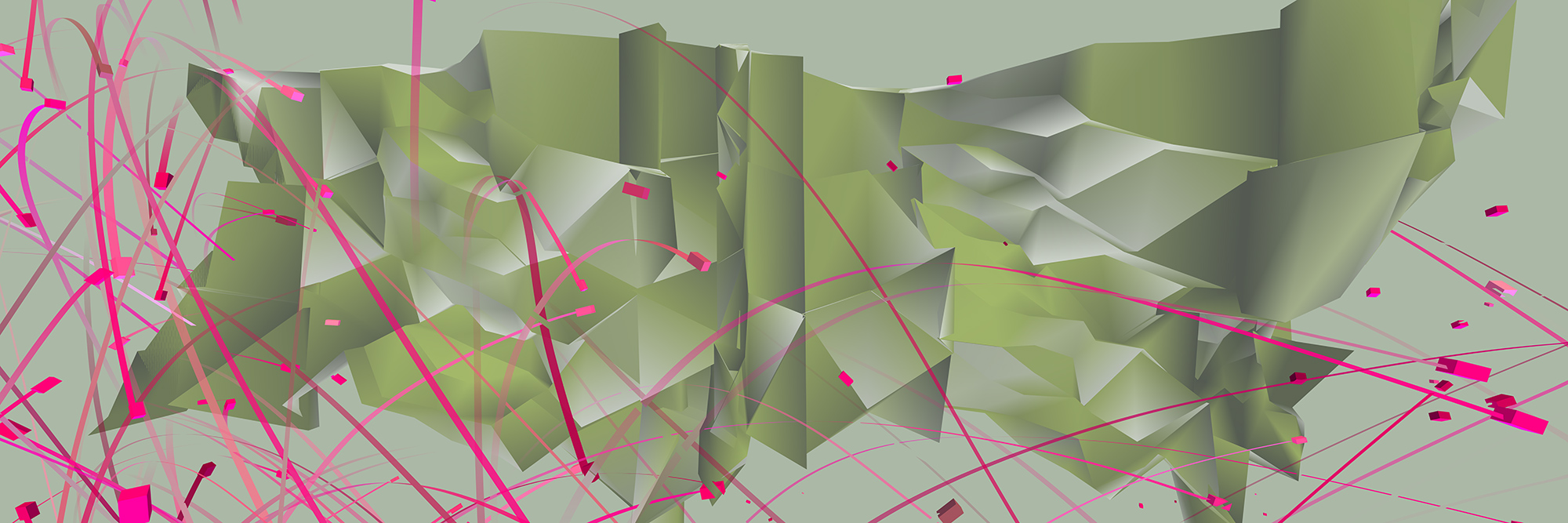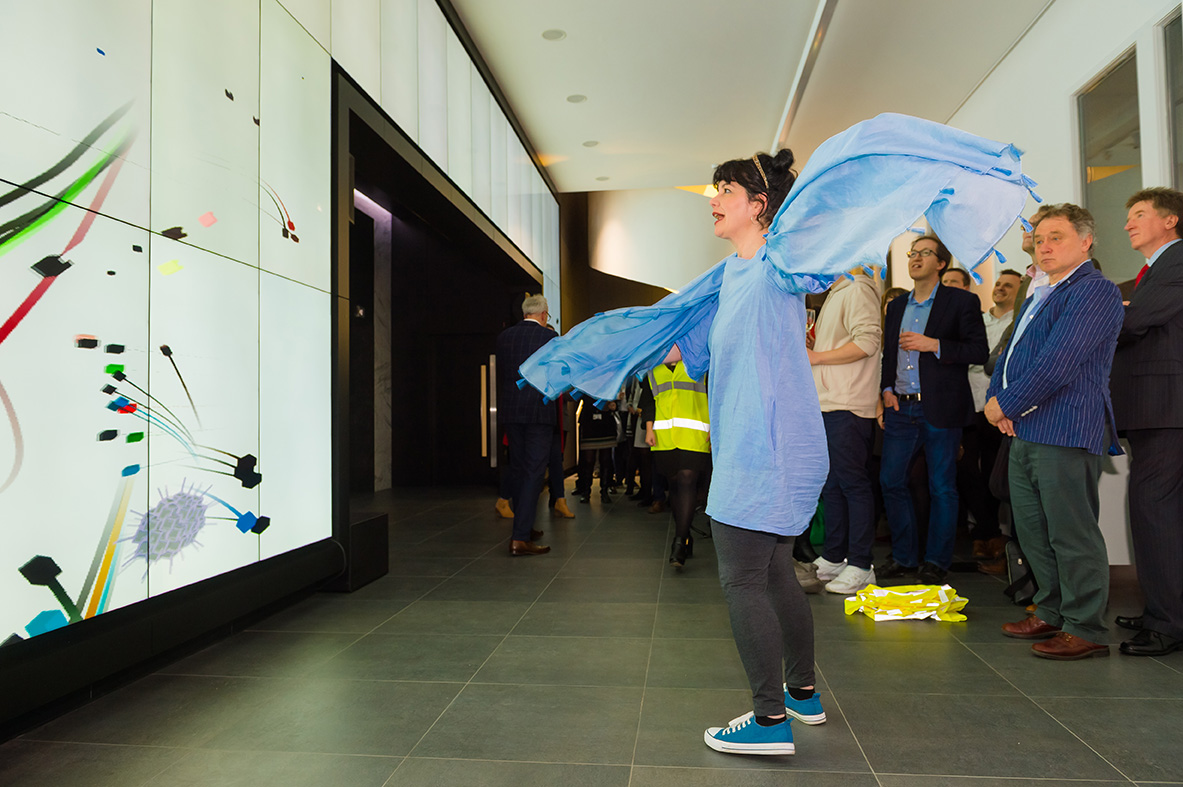Brendan Dawes dropped out of school when he was sixteen. He then became a photographer, a sound engineer, made a few electronic records and ended up working in an electronics factory.
These days, however, he’s a designer and artist. Brendan “explores the interaction of objects, people, technology and art using form and code with an eclectic mix of digital and analogue materials.” He has written two books on interaction design. His work is featured in New York’s Museum of Modern Art and he has companies like Airbnb, Google, and Twitter on his client list.
One of his recent projects, Fermata, has completed its run in the foyer of the Bruntwood Neo building in Manchester. The visual installation used various data feeds, including social media commentary, and construct abstracts to create imagery on a 30-screen display. We caught up with Brendan to discuss the installation and how he feels it was received upon its completion.

What gave you the initial idea for Fermata?
Like anything, it starts with the context. In this case, the foyer of a newly renovated, modern office building. It would have people passing through the space momentarily. When I was formulating ideas, I kept thinking about time. I remembered a book I’d read a few years back by artist Nicholson Baker called Fermata. The main protagonist of the story could pause time. I looked up the term Fermata and it turned out it was a musical notation that marked a note should be held longer than its normal length. I thought that would be a great theme for this work. Extending the normally fleeting moments as people passed through the foyer, so they become extended marks so to speak on the large LCD screen canvas.

What was the intention behind including the social media aspect for Neo and Manchester?
The social media was one aspect of the piece alongside detection of movement, energy of the building and weather conditions. It was kind of a layered approach. Input that was close to the piece such as the physical movement all the way out to the social media which was representative of the input from the outside. In this way, it gave a complete picture, albeit an abstract one, of interactions in and around the building.
What were people’s reactions to the installation?
The reaction has been really great both from the public and Bruntwood. We had a big opening for the building and the work. It was wonderful to see people interacting within the space. Realising that tweeting at it made stuff happen and the colours of their clothes changed the colours on the canvas. Lots of lovely tweets on Twitter too. Personally, I loved watching visitors to the foyer realising that their presence influenced what was on screen. From people delivering parcels to people turning up for important meetings. I think having that surprise and then delight pay-off is an important one.

If you were to do it again is there anything you would change or add?
I think I’d like to run it on a PC with much more power. We could have more interactions on there and keep those moments on screen longer. I had to compromise a little on how much I could keep things hanging around with how good I needed the CPU performance to be.
What is the next project/idea you have percolating away?
I’ve just finished a big installation for PWC (PriceWaterhouseCoopers) in the new data Lab of their giant London HQ. The piece features 880 digitally addressable LEDs embedded in 220 custom made cubes which are covered in fabric. The whole thing creates abstract live data displays from the likes of TFL, the weather and Twitter as well as making various beautiful patterns, all across a 10-metre-wide wall. The whole idea is to show data can be soft rather than something hard which we see all the time. It’s the biggest thing I’ve done to date and I’m looking forward to publishing the details later this month.
Brendan’s other works are a pure visual delight and we strongly recommend you do your eyes a favour and visit his website. There you will find everything from show posters for groups like Ben Folds Five, to our personal favourite, a handy graph on the number of kills in James Bond films. Brendan represents the kind of artist that we find very important. An artist who isn’t afraid to step outside of the box and combine a number of different elements to create something truly unique. If only everyone saw the world like Brendan, we’d never walk through a boring building foyer again.

